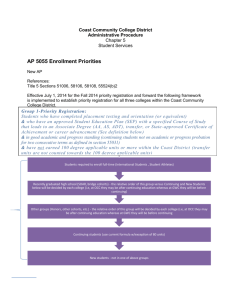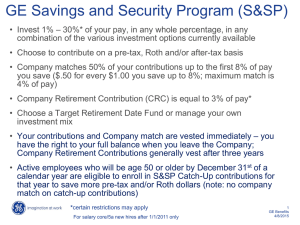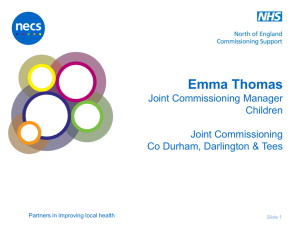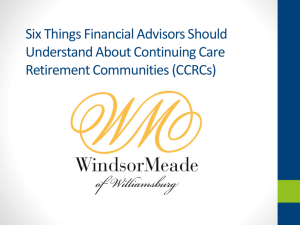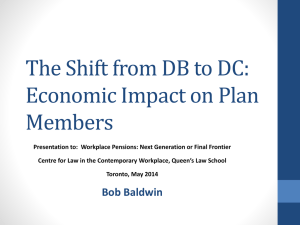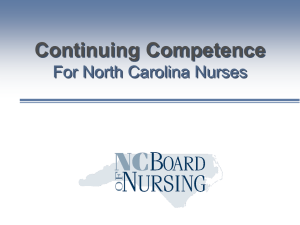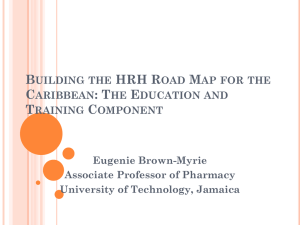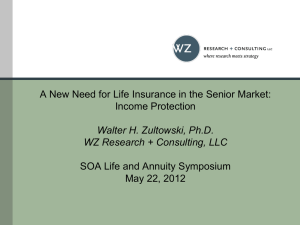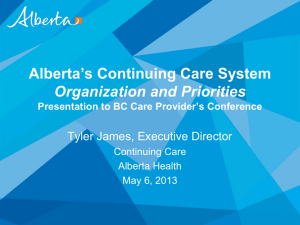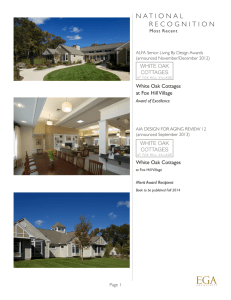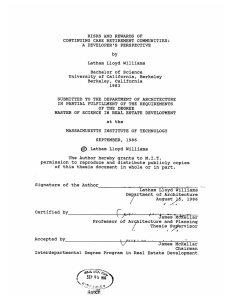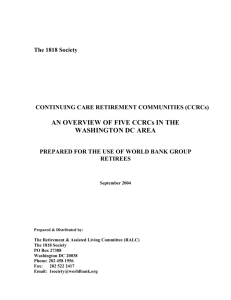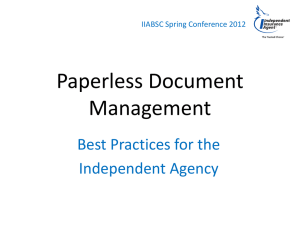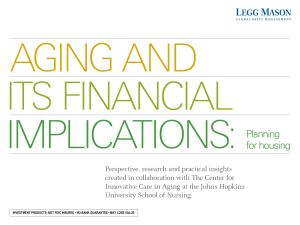Continuing Care Retirement Communities Or, CCRCs
advertisement
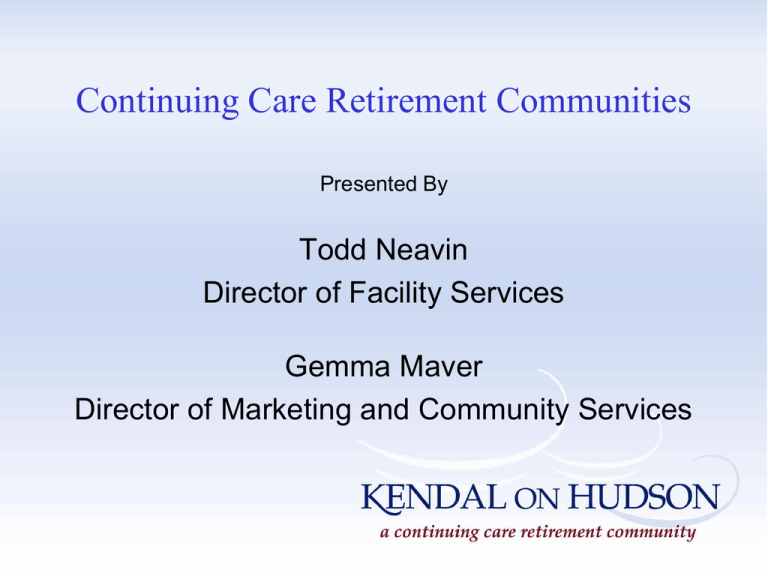
Continuing Care Retirement Communities Presented By Todd Neavin Director of Facility Services Gemma Maver Director of Marketing and Community Services Continuing Care Retirement Communities • Continuing Care Retirement Communities (or CCRC’s) offer innovative and independent lifestyles for single and married older adults. • This type of community is different from other housing and care options for older people in that it offers a long-term contract that provides for housing, services and nursing care, usually all in one location, for the rest of one’s life. • Thus, the CCRC is designed to meet your needs in a familiar setting as you grow older. Continuing Care Retirement Communities Some History The concept of continuing care is not new, but was conceived by some not-forprofit church, fraternal and civic groups in the early 19th century. The greatest growth in the number of CCRCs has occurred since the 1960’s with the largest increase occurring during the 1980’s. In 1990, estimates were that 350,000 older adults lived in 1175 CCRCs across the nation. In 2000, a reportedly 625,000 older men and women have made their homes in approximately 2100 CCRCs. Estimates are that these numbers will double in 10 years. Continuing Care Retirement Communities Their Popularity Reasons why people move to a CCRC: • • • • • Availability of health, long-term care and medical services that allow for “aging in place” – For couples, especially, it is the guarantee for a surviving spouse/partner’s care and ability to be together as higher levels of care are needed. A predictable way to obtain and pay for future needs, especially health care needs. Independence, especially as it relates to reducing the burden one would place on a spouse or children. Proximity to adult children. Maintain independence without being a burden while having more opportunities for contact with children and grandchildren Services and amenities including maintenance, transportation, and a healthier lifestyle supported by recreational, educational, fitness and wellness programs. -From the Pathways to Life Quality Study Ithaca College Department of Gerontology, and the Bronfenbrenner Life Course Center, Cornell University Continuing Care Retirement Communities What They Offer Typical services and amenities include: • • • • • • • • • • Meals Housekeeping Maintenance of buildings and grounds Scheduled transportation Social, recreational and educational activities Security Emergency response systems Health and wellness programs, including fitness centers Personal care services Skilled nursing care Continuing Care Retirement Communities The Contract The Continuing Care Contract is a legal agreement between you (the resident) and a continuing care retirement community. In exchange for a one-time entry and ongoing monthly fees, this agreement generally secures living accommodations and services, including health care services, for the rest of your life. Continuing Care Retirement Communities Contract Types The three most common types of contracts are: • Fee-for-service Contract: You pay for all long-term assisted living and nursing care required. • Modified Contract: Includes a specified amount of long-term assisted living and nursing care beyond which you are responsible for payment. • Extensive (or Life Care) Contract: The most comprehensive agreement which offers unlimited assisted living and long-term nursing care for little or no substantial increase in your monthly fees. Continuing Care Retirement Communities The Cost The cost structure for most CCRCs is based on the payment of a one-time entry fee and an ongoing monthly service fee. The entry fee is based on: • Type of contract chosen – Fee-for-service, modified or extensive (life care) – Refundable options, if available – Discounts for LTC insurance, if available • Size and location of the residence selected • Number of occupants per unit Continuing Care Retirement Communities A Word About Quality Resident Life and Services Resident Health Care and Wellness Financial Resources and Disclosure Governance and Administration • • • Must have completed 5 years of successful operation Occupancy must be at 90% or better A rigorous self-study process combined with peer review


